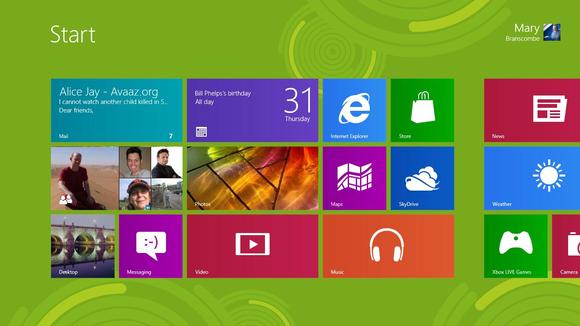Experience the Whole Web With Windows 8
“Experience the Whole Web With Windows 8” by Cameron Evans first appeared on the High Innovation Microsoft Education blog.

Microsoft and Windows 8 are here at EDUCAUSE 2012. In the weeks and months ahead, the higher education community will discover all of the new capabilities of the reimagined Windows 8. One of my favorite standout experiences for Windows 8 is the new Internet Explorer 10.
You are probably thinking, “A web browser? Really? That’s your favorite Windows 8 experience?” My response is a simple, “Oh Yeah!”
Modern Apps and the Modern Web
Let me share my perspective for a moment. Higher Education was most likely the first industry to embrace early mobile devices and building mobile apps. In the beginning, the mobile choices were few and built primarily for smartphones. Last generation smartphones did not have the processing power to effectively render modern websites on a smartphone. As a result, the dawn mobile apps and broad expansion mobile app marketplaces began.
From the beginning, Windows 8 has focused on fully embracing the standards for the modern web: HTML5, CSS, and JavaScript. The support for industry standards in IE10 make using the whole web beautiful and immersive on Windows 8 devices and PCs. Internet Explorer changes the conversation from an apps only discussion to a modern apps and rich Web experience for mobile devices.
Higher Education leaders have shared with me that they have shuttered their native app development efforts in favor of building for web browsers and open standards. The promise is by using modern web standards–universities can build rich web experiences for Windows, Macs, iOS, and Android derivatives. The reality is that non-Windows devices have built a successful business model around native mobile apps—not a free and open web experience.
Windows 8 provides a different perspective. IE10 takes modern web experiences further by allowing them to behave like modern apps that can use multipoint touch as a first class input. For example, take the popular tablet game, Contre Jour, originally built as a native app on iOS and the 2011 iPad Game of the Year. Using HTML5, IE10, and Windows 8, it is difficult to tell the difference between playing a native app games or a HTML5 web games. The combined IE10 performance and play action creates a compelling web experience that performs on par or better than its tablet equivalent.
Games are great benchmarks for what is possible on the modern web. Games help college and university web developers challenge their conventions of what is possible with IE10 and Windows 8. While Contre Jour is the latest IE10 game to move from native app to the web, there are others. Visit the reimagined sites for Atari, Cut the Rope, and Pulse to get a showcase of the modern web.
MSN Reimagines the modern web
The next example of modern web with IE10 and Windows 8 is the reimaginedMSN.com. MSN.com has been re-architected to take advantage of HTML5 and IE10’s capabilities. In Windows 8, MSN.com is fast and fluid when scrolling the page for content articles. The layout reflows content when IE10 is snap to the side and makes the MSN.com work like a native Windows 8 app.
As schools and universities strive to find balanced between native apps and the modern web, Windows 8 and IE10 provide a greater degree of flexibility than iOS and Android by support the whole web plus new native apps.
Discovering New Apps from the Web
When you visit Bing with IE10 on Windows 8, you will notice a “+” sign on the IE10 Tool icon. By clicking that little plus symbol, IE reveals that there is a native app for Bing that you could use. If you do not have the app, IE10 will take you to the Windows Store to download it. If you have the app installed, IE10 will switch from the browser to the native app. This gives consumers two benefits: colleges and universities make their native apps easier to discover with IE10 and consumers can choose how they want to access the content app.
From multi-touch games and modern websites to supporting the whole web and discovering new apps, IE10 could be most impactful experience on Windows 8. Because Windows 8 supports HTML5, CSS, and JavaScript as first class development environment, colleges and universities will find that their web designers and developers will be more productive with Windows 8. Whether they are building for the modern web or taking their skills and building modern apps, they can get more value from the experiences that engage students and faculty with the university brand.
Build for the Whole Web
Resources for Web developers and programmers can be found atBuildWindows.com. Budgets continue to be constrained and new mobile devices continue to emerge in the consumer market. IE10 on Windows 8 makes building for the modern web a prudent and fiscally responsible choice.
I look forward to conversations with higher education leaders this week at EDUCAUSE 2012. Never before has technology been so critical to building and sustaining student engagement, accelerating research, enhancing faculty productivity and creating actionable insight for all institutional leaders. Windows 8 provides lens to sharpen our focus on improving educational outcomes across our nation’s best colleges and universities.
We will continue the conversation in Denver.







0 Comments
Leave a Comment
Your email address will not be published. All fields are required.